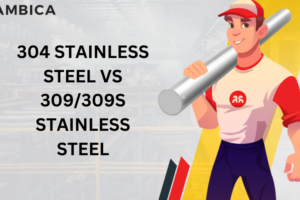Modinomics, based on PM Modi’s pragmatic economic policy, introduced the “Make in India” campaign, akin to the United States’ “Buy American” campaign, in September 25, 2014. Its main goal was to project India as a global manufacturing hub. The strategy adopted was to encourage multinational and local companies to manufacture their products locally. Both the American and India campaign had the ultimate goal of uplifting their respective economies which had been battered by prolonged economic sluggishness. The premise is protectionism to protect the local industries and generate growth in terms of revenue and employment. This paper examines the contribution of the Stainless Steel (SS) to India’s Make in India campaign.
The “Make in India” policy is labour and capital intensive to propel the growth of the manufacturing and service sector. One of its focus is India’s stainless-steel industry. In 2016, the worldwide stainless-steel market size was valued at USO 85.45 billion. In 2017 India was the second largest producer of SS, next to China. Its stainless-steel production was 3.6 million tonnes with an annual growth of 10 per cent.
In the recent years however, the Indian stainless-steel industry has witnessed a downward spiral in terms of its growth. This was due high production cost in manufacturing as a direct result of custom duties imposed on important raw materials. Therefore, high input cost will definitely adversely affect the industry players. But all is not lost under this policy.
It has to be noted the expansion of the steel sector in India has been large driven by abundant availability of iron ore and cheap labour. Hence, the steel sector contributes majorly to India’s manufacturing output.
Under the policy, the steel industry has witnessed large scale investments. This was not confined to the local stainless-steel industry but also associated mining and metallurgy sectors. The Department of Industrial Policy and Promotion (DIPP) noted that the metallurgical industries attracted US$ 10.84 billion in FDI between 2000 and 2018. Some of the large-scale investments in the steel industry are a projected one million tonne capacity steel plant in Jharkhand. The total cost is 22,000 crore or US$ 3.13 billion.
The government has levied 30 per cent export duty on iron so that there is steady supply of raw materials to the local steel industry. Additionally, the government has boosted its infrastructure and road projects to increase steel demand. This is achieved also by accelerating the growth of the rural economy and with improved infrastructure that is expected to lead growth demand for steel.
In 2017, the National Steel Policy (NSP) was approved with the aim to project an internationally competitive steel industry. The NSP 2017 has Projected 300 million tonnes steel-making capacity and 160kg per capita steel consumption between 2030 and 2031. Additionally, the Ministry of Steel has set up Steel Research and Technology Mission of India (SRTMI) which is steel driven. This was developed with the cooperation and collaboration of the public and private sector steel companies. The primary focus is on R&D. The initial cost was Rs.200 crore (US$ 30 million).
According to the Ministry of Steel the National Steel Policy 2017 and Domestically Manufactured Iron & Steel Products Policy 2017, introduced in the aftermath of Mii, boosted the production and consumption of steel statistics showed per capita consumption rose from 59 kg between 2013 and 2014 to 69kg between 2017 and 2018. India produced 103 million tonnes of steel between 2017 and 18. The country was projected to be the second largest producer of steel in 2018.
The nation is projected to take over Japan as the second largest producer of steel in the world. In 2018, domestic steel consumption was expected to grow at an annual rate of 5.7 per cent. What is more interesting is the country is expected to overtake the United States to emerge as second largest steel consumer in 2019.
There is undeniable a big scope for India’s growth in the stainless –steel sector. It has low per capita Steel consumption. Increased construction of infrastructure and the rapid growth of the automobile and railways sectors will help boost the stainless-steel sector. Additionally, increasing R&D in stainless steel manufacturing will improve the sales of products by increasing their durability, corrosion resistance, and strength. There is also growing demand from end-use industries.
India knows it needs to boost its mining capacity to ensure its steel is at sold at competitive rates. This entails amending the Mines and Mineral Development and Regulation Act. Additionally the local firms must upgrade their factories so that products made from stainless steel is sold at good prices. This can be achieved by amending the Apprentice Act and Factories Act Therefore, skilled workforce is vital. This will improve the country’s global competitiveness.
It has to be emphasised that stainless steel demand in India has exceeded 3 million tonnes since 2014. Production in the following year was 190 times higher than in 1978. With a focus on quality, India is on the right track to enviable growth.





